Last Updated on 28 April 2023 by Alisea Mae
As you may know from previous articles, I am a big juicing advocate and a fan of the Juicemaster Jason Vale. I know from my years using his recipes that we can use an array of vegetables, fruits, and herbs for healthy detox plans. This got me thinking about growing my own ingredients, and today I want to share my recommendations.
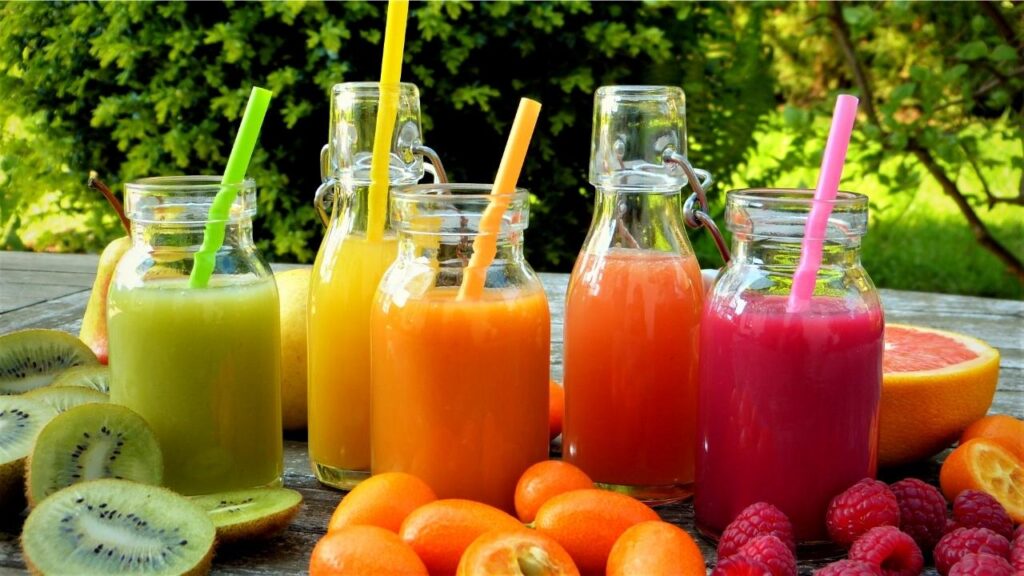
Learning what to grow for juicing is a great way to make the most of our produce, get the best nutrients, and save some money along the way. Spring is the perfect time to get planting, and you should have no issue with these in our UK climate. These options are beginner-friendly with no need for a polytunnel or greenhouse. They are also all options I use myself regularly.
A quick disclaimer for you here before we get into the different recommendations. I am not an expert gardener by any stretch of the imagination, and I’m still learning. I recommend checking out Sarah Raven for planting advice.
With that out of the way, let’s start with my first recommendation for juicing with fruit, vegetables, and herbs.
1) Beetroot
Beetroot is one of those ingredients like no other in the vegetable garden. I’ve tried to find a substitute when unavailable, but nothing quite measures up. Beets have more than that great colour and earthy taste. They are also full of manganese and nitrates, the latter being great for blood pressure and cognitive function.
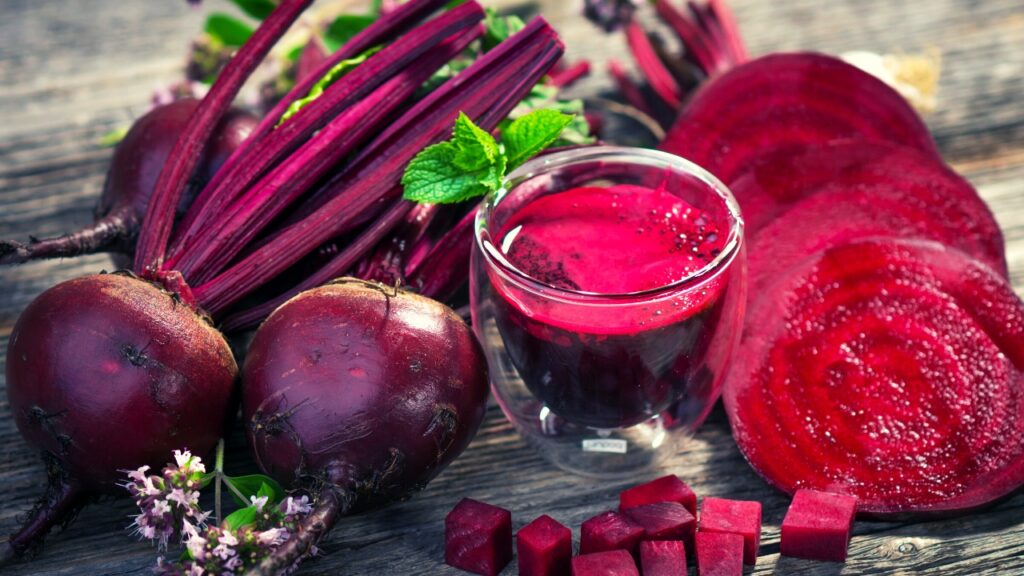
Growing your own beetroots in batches means you have a more reliable supply, and it is fun to play around with root vegetables. Additionally, these vegetables grow well in limited space and are ready in as little as 40 days sometimes. You can sow them from seed, but there are some suppliers with plants if you want a faster crop. Check out the RHS website for a very useful guide on how to grow beetroot.
2) Carrot
A great piece of advice that I love is drinking the rainbow for better health. There’s no better contender for orange than carrot because the sweet juice is really good for us. They can indeed help us see in the dark thank to their carotenoids.
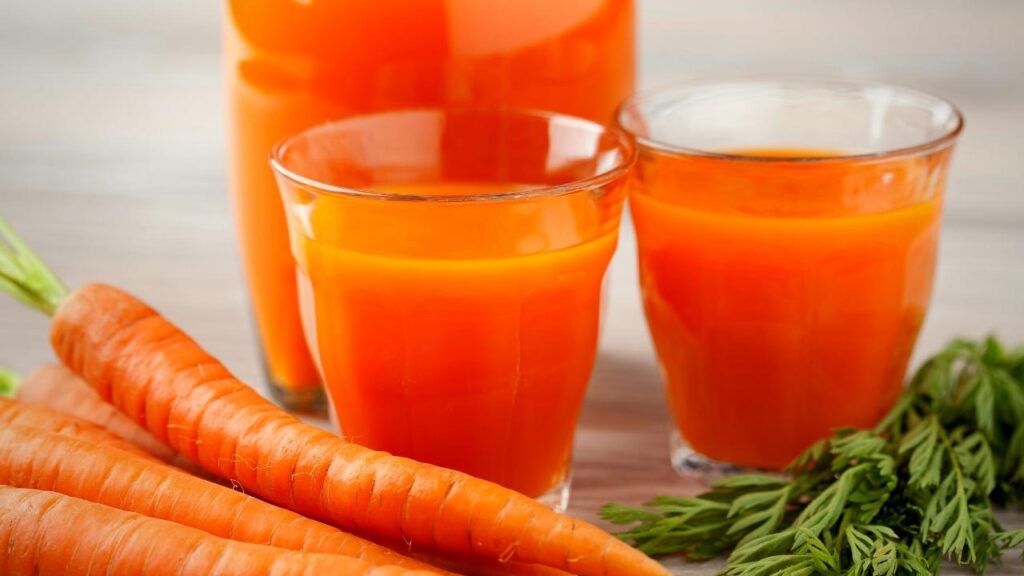
It is pretty easy to sow some carrots in a raised bed and wait for them to get nice and plump. Although, there is always the risk of going in too early and getting something minuscule. I know I advocated carrots based on being orange, but don’t be afraid to look into some of the old heritage options for a truly diverse rainbow of carrots.
3) Broccoli
Don’t dismiss the idea of broccoli in juicing until you try it. Broccoli does tend to have a distinctive taste so you will have to pair it with the right ingredients. However, as I found out from my Juicemaster books, the stems are very healthy and easy to add to a recipe.
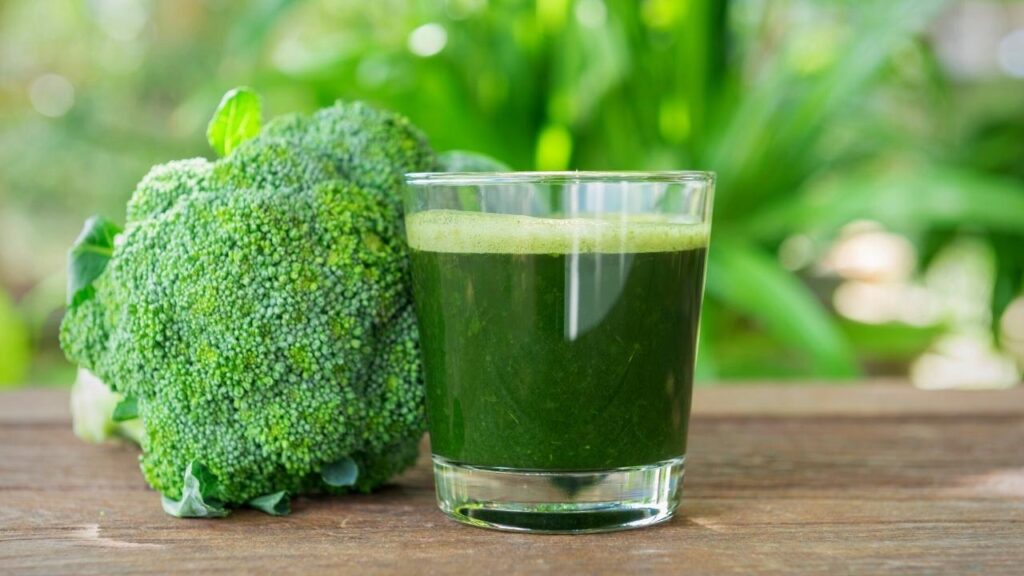
There are a few considerations for healthy broccoli plants. You will do best in well-drained soil that isn’t too acidic and gets enough sunlight. If you are concerned about sowing broccoli seeds and getting a good crop, you could try some plants first.
4) Celery
Celery juice is one of the trendier options in the juicing world right now, especially when paired with the right spices and citrus fruits. It has strong anti-inflammatory properties and is great for lowering blood pressure. I learned about it through the “28-day super juice me plan“, where it was combined with cucumber juice for a healthy shot on alternate days. The duo works well together because it allows for a great balance of sodium and potassium for a natural electrolyte.
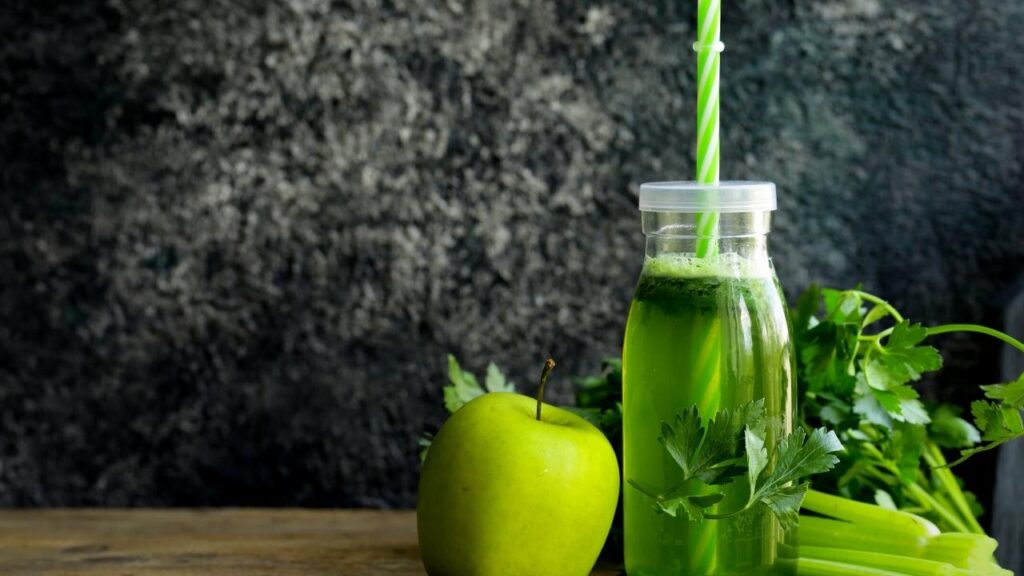
The best tip I have seen about growing celery is that they do better in blocks than in rows because you want them bunched together to shade each other. This makes them a good choice for containers rather than a raised vegetable bed.
5) Peas
The vegan world has really come around to the benefits of peas in recent years through pea protein. But, did you know it is great in juice too? Peas are full of vitamins and minerals, including a good source of K and iron. They can provide a nice base that works well with lemon and apple.
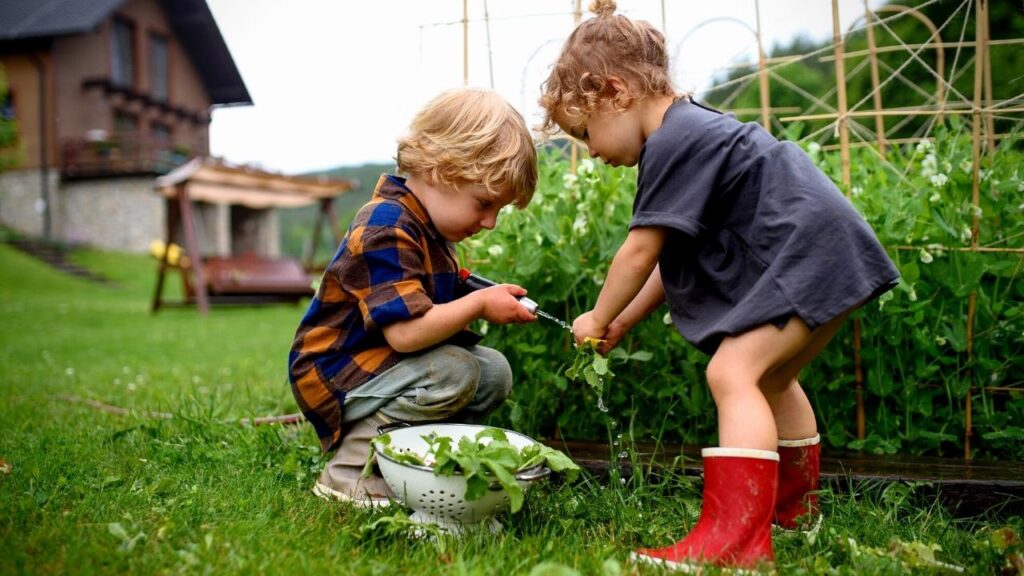
One of the reasons I like growing peas is that they are great for introducing kids to vegetable gardening. For a start, it shows them where a common tea-time ingredient comes from. They can have fun picking and shelling the pods and often find they taste even better fresh because of the sweetness. There is also the fun of building a climbing structure from bamboo canes. Consider planting the peas in good compost in a free-draining container to keep them safe and accessible for the whole family.
6) Kale
Kale is a go-to super green vegetable that is very popular in juicing and vegetarian recipes. One reason is its health properties, as kale is full of antioxidants and vitamins. It is also proven to reduce cholesterol. Another reason is the mild taste, which stops it from overpowering other ingredients. As well as juicing kale I use it in a recipe from Jason Vale’s “Juice & Blend 7 Day Reset” where coconut milk is used for the base. I also recommend not over-blending to keep its texture.
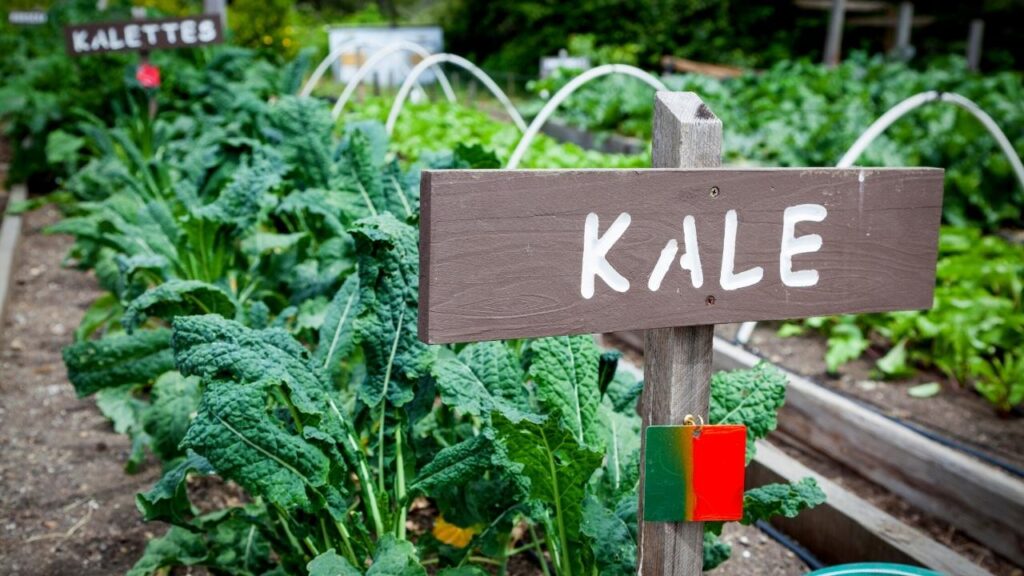
As for growing Kale, it shouldn’t be too hard with the right conditions. It can thrive and produce some dark hefty leaves with rich well-drained soil and enough light. Some recommend adding manure when planting, but it’s understandable if you don’t want to deal with that right now.
7) Spinach
There was a good reason that Popeye ate so much spinach to stay big and strong. Were he around today, he’d probably be juicing with it. It is full of vitamins and antioxidants and can also help with acid reflux. This is largely down to the Chlorophyll. You may know this as the pigment that turns leaves green, but it is much more than that. Studies show it is great for detoxification and potentially even weight loss. This one was easier than I expected so I highly recommend giving it a try. I got a good crop with hardly any effort at all.
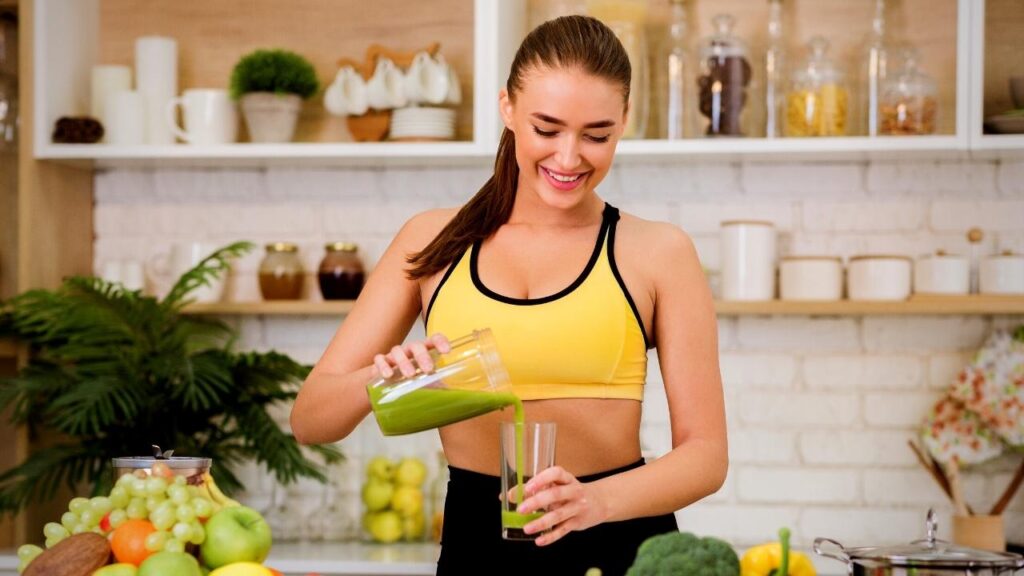
8) Fennel
Many of you will already know how great fennel is as a tea. It is a great choice for soothing a stomach and any menstrual issues. It is also high in potassium. So, it makes sense to add this to your juice too to enjoy the benefits and great flavour.
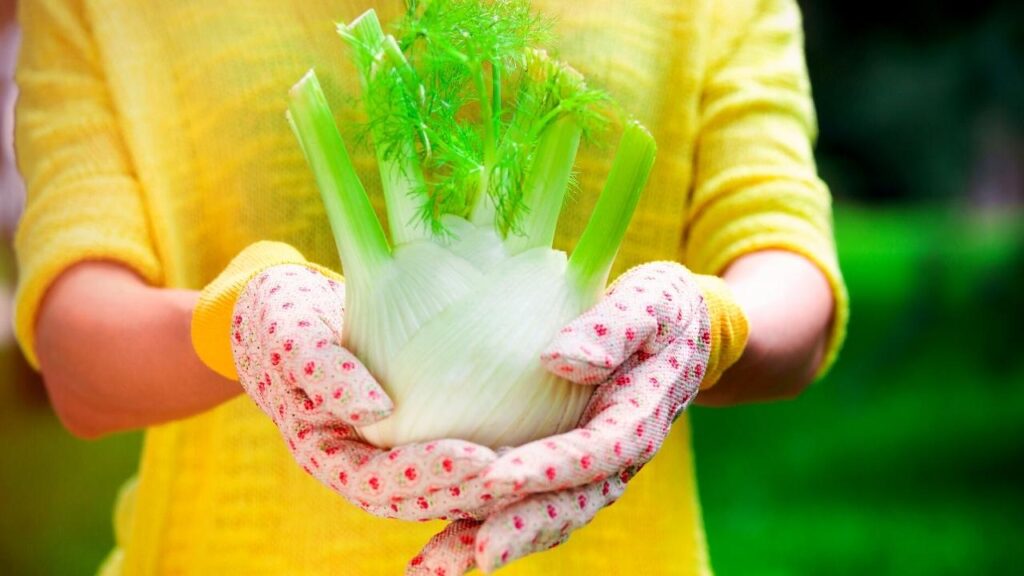
Fennel isn’t too hard to grow from seed, but you will need to thin them out so they don’t outcompete each other. It can grow pretty fast in mild temperatures, but just remember it will bolt and flower early if it gets too hot.
9) Rhubarb
Rhubarb sounds like an odd choice when we are so used to sweetening it and adding it to desserts and preserves. However, there are benefits to juicing the stalks too. You will enjoy plenty of B vitamins this way, as well as phosphorous and zinc, making it quite energizing. Just make sure not to use the leaves as they are poisonous. Find a good open patch where it can spread out, but make sure the area has free-draining soil because it doesn’t like sitting in water.
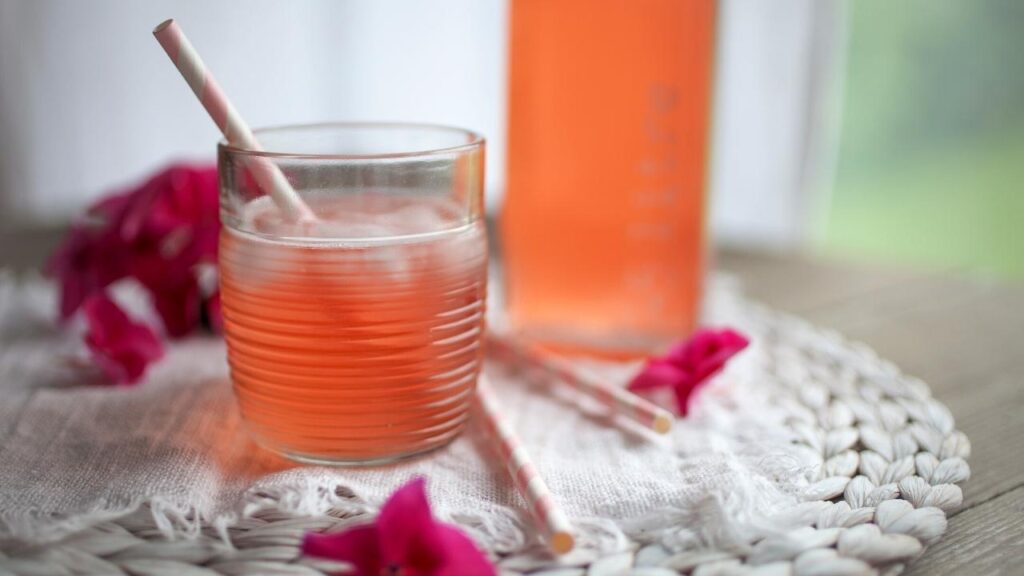
10) Berries
There are lots of different berries that you can use to enhance the flavour of your juice. Blueberries are very rich in antioxidants, so you might want to make use of those when in season. But, the more you try, the more recipes you can play around with.

It is up to you how you plan to train your fruit bushes and which you plant. It could be fun to try a few and introduce different flavours to kids. Just be careful with the wildlife. If you don’t want to share your crop, you will need to consider bird-friendly netting.
11) Mint
Mint is a great herb to add to juices for the refreshing flavour alone. However, did you also know that it can aid cognitive health? Some users swear by it for stress relief and headaches. Mint is a great choice if you have some unused pots, and it will thrive in full sun. You can then pick at it as needed and enjoy the scent.
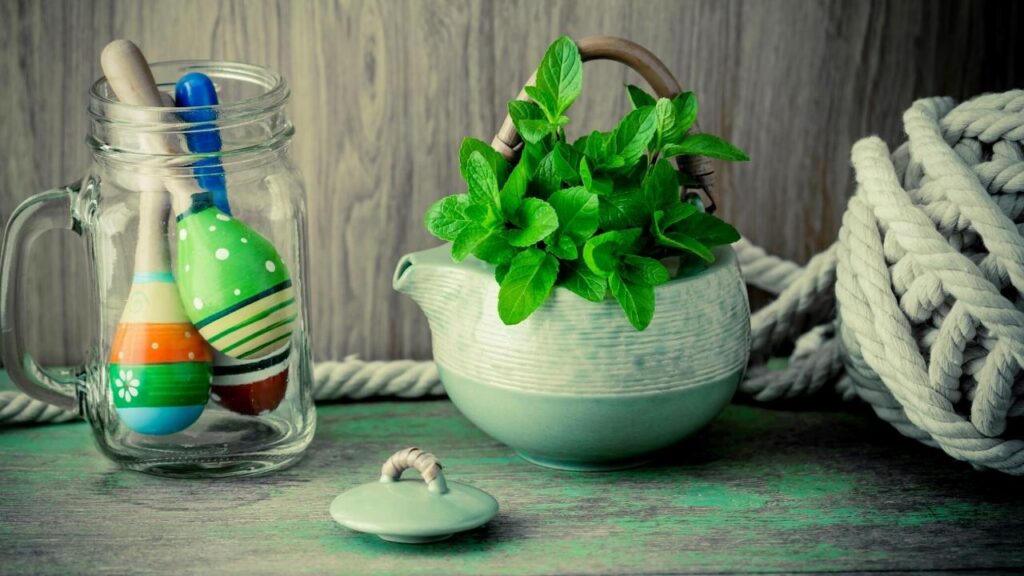
12) Basil
Basil is another herb that can help elevate the taste of a recipe while offering additional health benefits. These leaves contain magnesium and other compounds to help improve circulation, lower blood pressure, and reduce cholesterol. Basil is really accessible if you want to grow it in a pot on a windowsill. I tried this to begin with, but I’m now switching to growing it outside for a better crop.
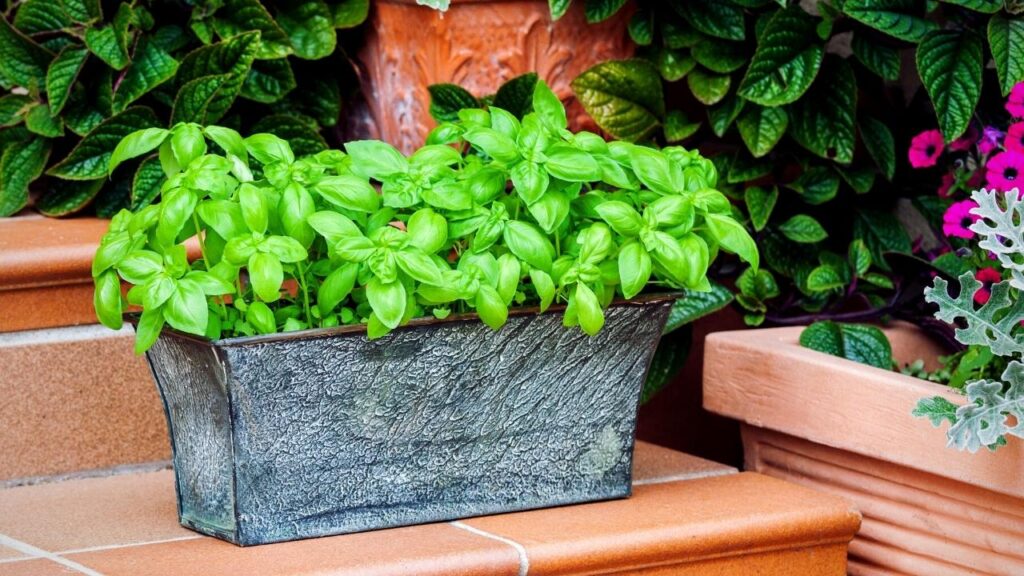
Choose your favourites and have fun growing
Hopefully, something on this list has tempted you into growing your own vegetables for juicing. This is the catalogue where I got my plants, in case you’re inspired to try them yourself. These are organic seeds, and you learn why I favour organic vegetable seeds in my other guide. There are so many healthy options that pair well together that you’ll never get bored trying recipes. I know I haven’t yet!
Leave a Reply